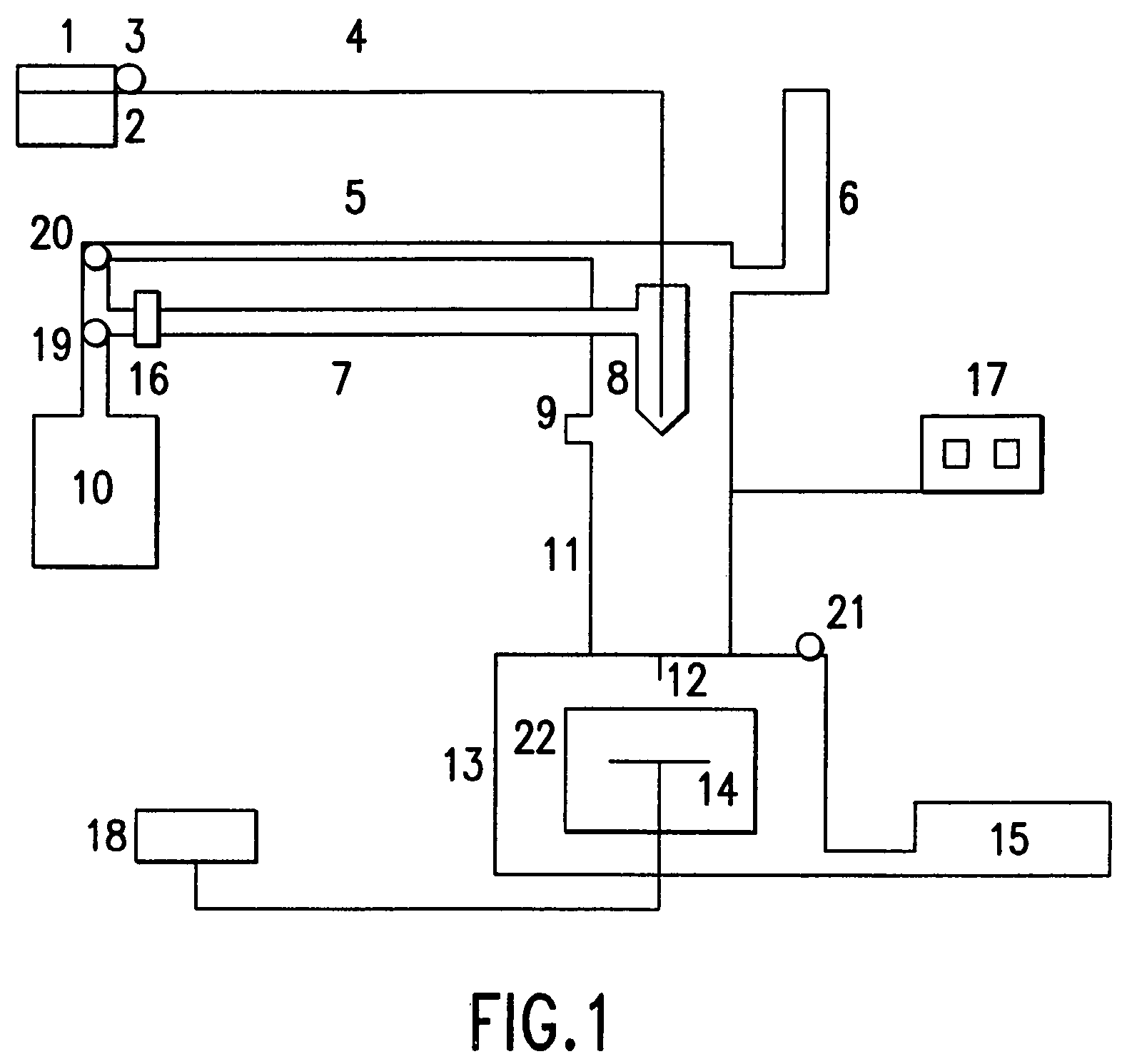Methods and compositions for the introduction of molecules into cells
a technology of molecules and cell walls, applied in the field of molecules introduction into cells, can solve the problems of limited use of plants by technology, limited usefulness of molecules technology, and limitations of each of these delivery methods, so as to improve integration, improve the number of selectable transformants, and improve the quantification of dna delivery
- Summary
- Abstract
- Description
- Claims
- Application Information
AI Technical Summary
Benefits of technology
Problems solved by technology
Method used
Image
Examples
example 1
Delivery of Molecules into Cells and Tissues by the Method of the Invention
[0116]Aerosol droplets containing nucleic acids and / or proteins were introduced into target tissue such as cells using the aerosol beam apparatus of the invention (FIG. 1). The aerosol was produced by a microflow nebulizer such as the HEN from J. E. Meinhard Associates Inc., or the MCN100 style M4 nebulizer from Cetac Technologies Inc. (Liu and Montaser, 1994; Tan, et al., 1992). The nebulizing gas was high purity compressed-helium which was regulated with an ACCU-TROL gas regulator-876X model RS-7-4 and filtered through an Arrow F300-02 IT filter. When HEN and the MCN100 microflow nebulizers were used, the nebulizing pressure was preferably 20-30 psi but worked within the range from about 10 psi to about 40 psi. The entrainment gas filled the entrainment tube and entrained the aerosol droplets in a straight line. Unfiltered, high purity compressed helium was used as the entrainment gas and was regulated by a...
example 2
Introduction of Nucleic Acid Into Corn Callus and Detection of Transient Expression
[0120]Embryogenic corn callus of Stine inbred 963 was transferred from stock culture maintenance medium, DN62 (Table 1) to a medium formulated to provide osmotic stress to the tissue. A preferred embodiment of the invention, DN620SM medium was used (Table 1). Preferably the embryogenic callus was transferred two to three days after transfer to fresh maintenance medium, a time when the cells are dividing rapidly (for maintenance, cultures are routinely transferred every ten days). After at least 45 minutes (preferably an hour) and up to 24 hours on this medium, tissue was collected and oriented in the center of the target surface prior to beaming. After beaming, the tissue was allowed to incubate on DN620SM medium for one day.
[0121]The plasmid used in transient expression experiments was preferably pBARGUS which was obtained from the Plant Gene Expression Center, Albany, Calif., although other plasmids...
example 3
Introduction of Nucleic Acid Into Immature Corn Embryos and Detection of Transient Expression
[0126]Immature embryos of Stine inbred 963 (10 days' post-pollination) were also used for transient expression experiments. In this case embryos were dissected out at between 1 mm and 2 mm in length and either used immediately or maintained for up to 10 days, preferably 2 to 3 days, on DN62AG medium (Table 1) prior to beaming. Forty-five minutes before beaming the embryos were transferred to DN620SM. After beaming as described in Example 2 for callus tissue, the embryos were allowed to remain on DN620SM for 30 minutes before final transfer to DN62AG for one day.
[0127]One day after treating immature embryos with the aerosol beam apparatus transient expression was evaluated by histochemical analysis. Immature embryos were incubated in the presence of the substrate X-gluc (Gold Biotechnology) at a concentration of 0.5 mg / ml in 0.1 M sodium phosphate buffer pH 7.0 and 0.1% Triton-x-100 at 37° C....
PUM
| Property | Measurement | Unit |
|---|---|---|
| concentration | aaaaa | aaaaa |
| concentration | aaaaa | aaaaa |
| size | aaaaa | aaaaa |
Abstract
Description
Claims
Application Information
 Login to View More
Login to View More - R&D
- Intellectual Property
- Life Sciences
- Materials
- Tech Scout
- Unparalleled Data Quality
- Higher Quality Content
- 60% Fewer Hallucinations
Browse by: Latest US Patents, China's latest patents, Technical Efficacy Thesaurus, Application Domain, Technology Topic, Popular Technical Reports.
© 2025 PatSnap. All rights reserved.Legal|Privacy policy|Modern Slavery Act Transparency Statement|Sitemap|About US| Contact US: help@patsnap.com

